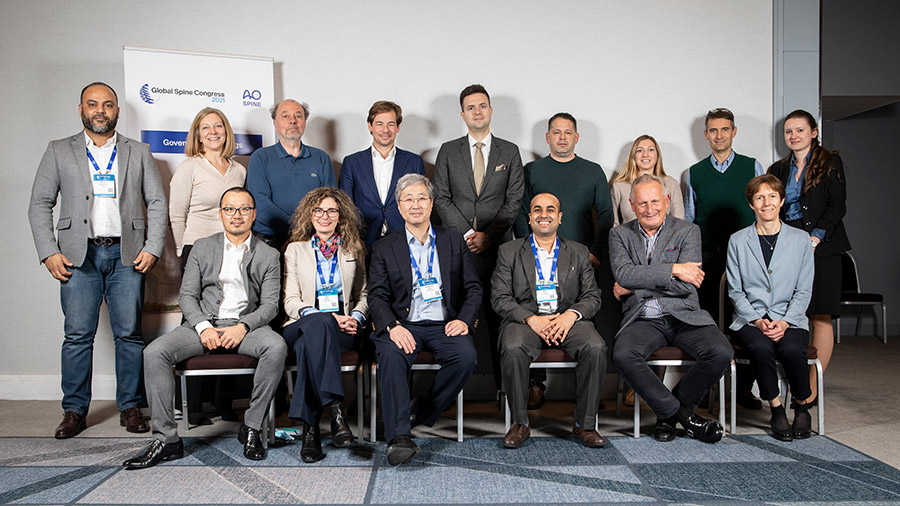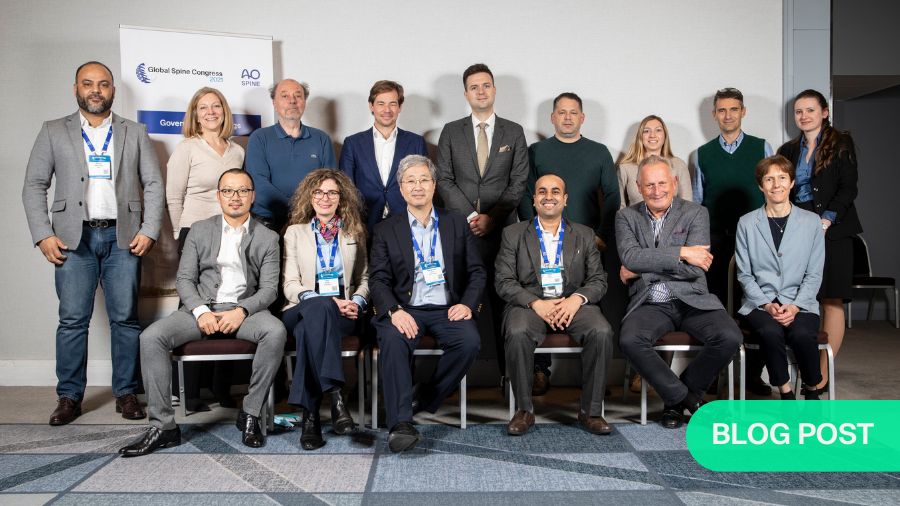Can’t see the forest for the trees: a common issue with osteobiologics

The AO Spine Guideline for the use of osteobiologics (AO-GO) in Anterior Cervical Discectomy and Fusion (ACDF) for spinal degenerative cases has been published in the Global Spine Journal (GSJ). AO-GO was developed by the AO Spine Knowledge Forum Degenerative and resulted in five conditional recommendations. The aim is to clarify existing confusion and drift among surgeons.
Osteobiologics represent a critical component of the spine surgeon’s toolkit. However, with a wealth of options now available, it is increasingly burdensome for surgeons to keep up with developments in this dynamic field. Thanks to a new international initiative spearheaded by the AO Foundation, an evidence-based guideline focused on osteobiologics in anterior cervical discectomy and fusion surgeries (ACDF) is now available. The new Guidelines mark a major milestone in ACDF and herald a more deliberate approach to osteobiologic use in the clinic.
The AO Spine Guideline for Using Osteobiologics in Spine Degeneration (AO-GO) help clinicians navigate the complex and rapidly expanding field of osteobiologics
When it comes to working with osteobiologics, busy surgeons tend to rely on products that they are familiar with. Alternatively, they may prefer to use an osteobiologic that they were trained with, or have limitations based on what products are available at their center. However, such an approach is a missed opportunity to tailor osteobiologic use to individual patient characteristics. Furthermore, when clinical decisions are not rigorously supported by up-to-date evidence, safety and efficacy outcomes may be impacted.
Prior to using osteobiologics, surgeons ideally need to be asking important questions such as “how do my patient’s comorbidities affect my choice of osteobiologic?” and “is an osteobiologic with bone morphogenic protein (BMP) appropriate for this case?” A lack of Guidelines has further exacerbated the complexity surrounding osteobiologic use. There has therefore never been a better time for the new AO-GO Guideline.
The AO-GO Guideline is a novel clinical tool that has been developed by a consortium of over 70 surgeons and researchers with expertise in degenerative spine diseases, from 22 countries.
AO-GO PI Prof Hans Jörg Meisel comments on the clinical significance of the AO-GO Guidelines:
“ACDF surgery needs reliable data on osteobiologics and their fusion potential for an accurate risk evaluation of complications and comorbidities.”
The new AO-GO Guidelines give practical evidence-based recommendations
The Guidelines currently make a series of five conditional recommendations that support osteobiologic use in practice. One recommendation for example, states that when using a cage with an osteobiologic in ACDF surgery, osteobiologics other than BMP should be used in common clinical situations. The Guideline also summarizes that in general, the evidence available does not indicate an increase in harm associated with the use of osteobiologics in common clinical situations. Remarks and a summary of evidence are included with each recommendation, providing the reader with easy to access supporting information.
While the Guidelines already represent a first in ACDF, they are also just the beginning. The Guidelines will be updated regularly using new evidence. Therefore, as evidence in the field of ACDF continues to build, the Guidelines will evolve and become increasingly robust. The ultimate aim for the AO-GO team is to develop recommendations describing which osteobiologics can be used at single level or multilevel ACDF in specific clinical scenarios. The Guidelines will also promote the conduct of more high-quality research in the field of osteobiologics while generally raising awareness about best practice for their use.
AO-GO PI Dr Zorica Buser explains the importance of the new Guidelines for promoting an evidence-based approach:
“The AO-GO Guideline will be a common language among different stakeholders allowing for advancements in the treatment of cervical degenerative disorders. The Guideline will be a foundation for high level of evidence clinical studies, a framework that will be used when devising a project or a treatment.”
The new guidelines were developed using the well-respected GRADE framework
To ensure that the AO-GO Guidelines were developed to the highest possible standard, the AO-GO team utilized the well-established GRADE framework (Grading of Recommendations, Assessment, Development and Evaluations) in collaboration with the McMaster University GRADE center. GRADE can be used to systematically rate evidence quality in order to make clinical recommendations. It is the most widely adopted tool of its type and is officially endorsed by over 100 organizations worldwide. GRADE has some similarities with the Delphi method. However, the Delphi method centers solely on expert consensus. With GRADE, systematic reviews are also conducted to provide supporting evidence for recommendations.
Assoc Prof Nancy Santesso, an expert in GRADE from McMaster University and the methodologist for AO-GO, explains the important role that the GRADE framework played in the creation of the AO-GO Guidelines:
“The GRADE framework was really useful, especially in this area of evolving research. We felt confident that we considered all the important factors when making the recommendations.”
In order to develop the guidelines, the AO-GO core team identified a range of topics that form the foundation of the new guidelines. A total of 15 key topics were identified. In a second step, the systematic review teams collected and screened the data available on the respective topics in order to create a series of systematic reviews. During phase three, the guideline panel evaluated all the evidence through the lens of their extensive experience and each recommendation was developed.
As a result of this process, an astonishing 15 systematic reviews on topics related to osteobiologic use in ACDF are published alongside the guidelines and a methods publication in the osteobiologic focus issue of Global Spine Journal. These publications, and the AO-GO Guidelines in particular, represent a landmark moment for ACDF surgery. Thanks to the AO-GO initiative, the global ACDF community will benefit from greater clarity around osteobiologic use going forward.
You might also be interested in:
Thank you for making AO-GO possible!
The power of the community and spine surgeon collaboration
AO Spine Knowledge Forum Degenerative
Helping surgeons to make the best choice by increasing awareness of evidence.
Addressing the disparity between hardware and osteobiologics
Hans-Jörg Meisel and Zorica Buser turn the spotlight on osteobiologics in degenerative spine surgery.
Global Spine Congress (GSC)
Gather the latest knowledge from AO Spine Knowledge Forum Degenerative at the GSC symposium and start adopting new technologies into your daily practice.








